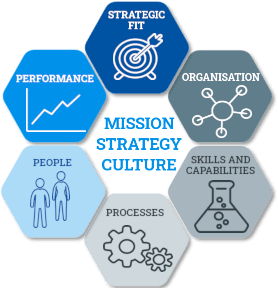How to manage your innovation people effectively
Innovating is a human activity and so it needs… people. If you don’t have enough of the right people available at the right time, your projects and innovation programme won’t deliver. To avoid this, you need to be good at innovation resource management. Exactly how you do it depends on your structure and your innovation goals. This article will set out a few options and give you a few tips based on my personal experience.
What this article is about
This article is about managing the human resources you need to deliver innovation.
It’s about ensuring you have enough people to deliver your innovation programme. It’s also about making sure that everyone is clear about how much time they should be spending on which activity. It’s about being able to track how much time people are spending and includes anticipating resource shortages and adapting resource plans accordingly. I’m not talking about only R&D, either. Innovation truly is a cross-functional team sport, so this is about all the people you need to deliver it.
Finally, it’s not about human resource management in the wider sense; the things like performance reviews, training and career development. It really is about how you can get make sure you have enough of the right people, with the right skills at the right time.
Why is innovation resource management important?

1 – it’s key to innovation project success
In various surveys, resource issues frequently figure in the top 10 reasons why projects fail. This is for any type of project too, not just projects that deliver innovation.
If your innovation programme is delivered by projects (and pretty much all of them are) then not delivering projects means you don’t deliver your innovation programme.
2 – you target your resources on the things that count
Since people are the most valuable resource in your company, tying them up on projects that will probably fail, means you are tying up all that creativity, experience, skill and expertise that could be used on other, more fruitful business activities.


3 – you have better “resource” discussions
Most innovation programmes are limited by the available human resources. Since no-one likes to hear that their new project cannot be started because people are not available, these discussions can be frustrating for all involved.
Having a shared and clear understanding of resource deployment makes these discussions more transparent and constructive.
4 – you can avoid frustration, stress and burnout
Most people do not like being overloaded with work and spread too thinly over a large number of activities. It leads to frustration and in extreme cases, stress and burnout. Having a good handle on people’s individual workload helps avoid this.

If you want to be good at resource management, what do you need to do?
You need to be good at four connected activities
ESTIMATION
Predicting how much of which type of resource is needed and when it is needed.
This establishes the resource needs for the programme.
ALLOCATION
Assigning people to projects as efficiently as possible while taking into account all kinds of constraints.
TRACKING
Checking that people are spending the right amount of time on the right projects.
Detecting or anticipating resource issues.
ADJUSTMENT
Adapting resourcing when unforeseen events occur. Re-assigning people between projects when required.
Estimation and Allocation should happen for each new project entering the innovation programme while Tracking and Adjustment run continuously for each project on a regular basis.
In addition, from time to time (I recommend 2-3 times a year) you should review, adjust and re-communicate the overall innovation resource plan.
Exactly how you accomplish each activity depends on the needs of your company and the size and complexity of your innovation programme. That said, whatever your approach, you are going to need some kind of “resource management tool” that helps you combine data on resource needs and availability and build an optimal resource plan for your innovation programme.
Each project team should estimate the resources they need over time. They should also update these estimates as the project progresses.
You need to know the availability over time of all people involved (or likely to be involved) in delivering innovation.
To have an overview of the entire innovation programme, the project and people data needs to be entered into the resource management tool (spreadsheet or app).
You should be able to use the resource management tool to run different scenarios to help you find the best allocation of people to projects for the coming period.
What does a “resource management tool” look like then?
For small companies, with a limited number of innovation activities you can use a spreadsheet to centralise the resource data. This is a simple first approach, but here’s a little warning. I know from personal experience that as the number of people and projects increases, it quickly starts to become difficult and time consuming to manage and use a spreadsheet.
My advice: don’t underestimate at what stage you should consider using a specialist application for resource management.
Before you find yourself with a huge spreadsheet to manage, it’s worth considering an off-the-shelf app for resource management. I attach some links in the “further reading” section to give you an idea of what’s available.
For larger organisations, you can go further and integrate resource management with project and portfolio management (PPM). Again, numerous software tools exist for this too.
Whatever approach you use for the tool, here are some tips for getting the most out of innovation resource management.
Resource Management Tips
With an indication of which of the four resource management activities they apply to.
Consider ALL relevant functions (not just R&D…)
estimation | Allocation | tracking | adjustment
When people think about “innovation resources” they almost always think of R&D. Remember, you will need people from across the whole company, so include all relevant functions in the resource plan.
Obtain firm commitment of resource allocation from enabling functions
Allocation | adjustment
“Enabling functions” are those functions where innovation is not a large part of the daily work. People working in these functions have a lot of “non-innovation” work to do and when push comes to shove, they may not be able to prioritize time for innovation vs. their “day job”. It’s worth spending time to ensure that the heads of these functions are ready, willing and able to commit their resource to the innovation programme.
Remember: no-one is “100% available”
Allocation | adjustment
Even if someone is “100%” dedicated to innovation, it does not mean they will spend 5 days per week working directly on innovation activities. Everyone has some “non-project time” in their professional life. This is working time spent on things that will not move a project forward such as general training, functional team meetings, work admin. I find that 15% “non-project time” is a reasonable assumption for most roles, so someone “100% dedicated” to innovation will probably spend around 85% of their week on it.
Don’t micro-manage. The 80:20 rule applies
estimation | Allocation | tracking | adjustment
Don’t try to achieve perfect resource management for everything and everyone. Instead, focus on the key projects and functions and take a light approach with the rest.
Think carefully about the granularity you need. More data = more work. For everybody. Don’t ask for resource and availability estimates accurate to the nearest hour if the nearest half-day will be enough. Don’t ask people to update plans every week if every month is OK.
Empower the project teams
estimation | Allocation | tracking | adjustment
The people doing the work should own their numbers, whether they are used for resource estimation, tracking or adjustment. Project leaders should also have a say on the allocation process – particularly if they need a specific individual on the team. Help teams by keeping resource management procedures as light as possible and by providing training and support to maximise the benefit for the effort they put into it.
Communication is key
estimation | Allocation | tracking | adjustment
It’s too easy to get stuck in data, spreadsheets and apps. This is a human process with people at the heart of it. Clear and open communication before, during and after a cycle of resource planning will ensure everyone gets the best result possible for themselves, their projects and the innovation programme overall.








